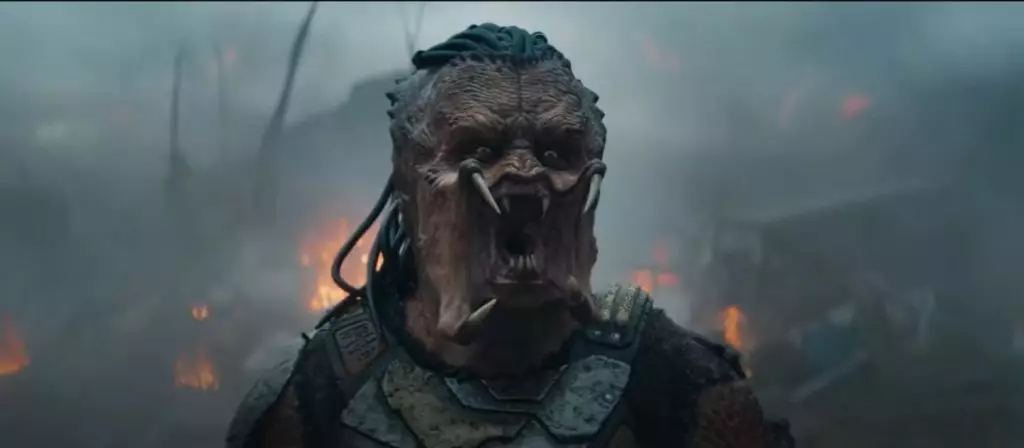The latest installment in the Predator saga, *Predator: Badlands*, signals a daring pivot away from traditional action hero fare towards a more character-driven, emotionally layered narrative. For decades, the franchise has thrived on the visceral thrill of humans versus alien hunters, often relegating the predators to near-mythic beasts while the humans serve as expendable pawns. However, this new chapter challenges that mold by positioning one of the Predators—a marginalized character within his own species—as the protagonist. This transition is not merely a creative risk; it’s a bold repudiation of Hollywood’s formulaic tendencies that often prioritize spectacle over substance.
By centering a young Predator’s journey, the filmmakers attempt to humanize the “monsters,” infusing the story with themes of kinship, exile, and search for identity. It’s a controversial move, arguably an overdue evolution that brings nuance into a franchise often dismissed for its simplicity. Yet, one must question whether this shift sacrifices the primal essence that made the original so memorable. Is this effort to deepen the Predator’s world an attempt to pander to a more sensitive audience, diluting the franchise’s core appeal? Or is it a genuine evolution that recognizes complex narratives are more engaging than one-dimensional brawls? The answer may lie somewhere in the middle, but critics must remain vigilant not to sacrifice the franchise’s adrenaline-fueled soul on the altar of political correctness or “progressive storytelling.”
Technological Advances and Artistic Ambitions
What stands out about *Badlands* is its commitment to practical effects, a nostalgic nod that elevates the film beyond generic CGI spectacles. Shooting in New Zealand’s rugged terrains and emphasizing tangible effects signals a yearning for authenticity amidst a landscape dominated by digital manipulation. This choice indicates a respect for craftsmanship and a desire to re-engage seasoned fans tired of hollow CGI. Moreover, the involvement of VFX icon Alec Gillis hints at a commitment to high-quality visual storytelling, blending physical effects with innovative technology to create a believable, immersive universe.
The film’s casting and staging also suggest a conscious effort to diversify the narrative. Elle Fanning, cast in multiple roles, adds layers of complexity and emotional depth, even as her character Thia embodies the battered yet resilient figure of a synthetic android seeking redemption. Her interactions with Dek, the young Predator, forge unlikely friendships that challenge audience perceptions of predator and prey, further elevating the emotional stakes. Nevertheless, the question remains: does this ambition for artistic depth come at the expense of pacing and spectacle? Can the franchise maintain its edge when balancing complex character arcs with the relentless tension fans crave?
The Cultural Moment and The Future of the Franchise
The absence of Marvel in Hall H this year underscores a broader industry trend—when blockbuster franchises step back, it becomes a moment for others to redefine their narrative boundaries. *Predator: Badlands* seems poised to capitalize on this shifting landscape, aiming to carve out a unique space that doesn’t rely solely on nostalgia but seeks meaningful storytelling. Its focus on themes of exile, belonging, and the desire to face archetypal monsters echoes current societal conversations about marginalized groups and the importance of understanding different perspectives.
However, in aligning with this introspective trajectory, the franchise walks a tightrope. It risks alienating its traditional audience that craves high-octane action and visceral thrills. The challenge lies in balancing innovative storytelling with the franchise’s DNA—gritty combat, primal survival instincts, and relentless tension. Moreover, with the franchise’s origins dating back over three decades, the question remains whether contemporary audiences are willing to invest in a predator’s emotional journey or if they prefer the familiar, adrenaline-fueled confrontations.
The release of *Predator: Badlands* in theaters suggests confidence in its appeal, but the real test will be whether this evolution sustains the franchise’s relevance in an entertainment universe increasingly dominated by streaming giants and mega-franchises. If it succeeds, it might herald a new era where even the most iconic monsters can surprise us with depth and humanity. If it falters, the franchise risks fading into irrelevance, remembered only for its nostalgia rather than its innovation.


Leave a Reply